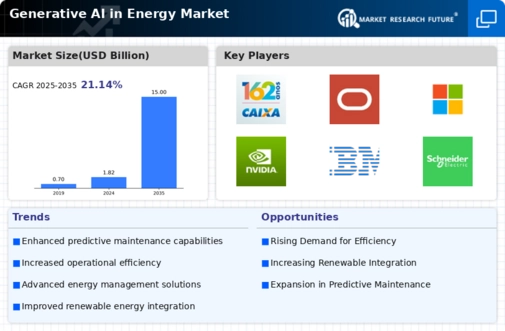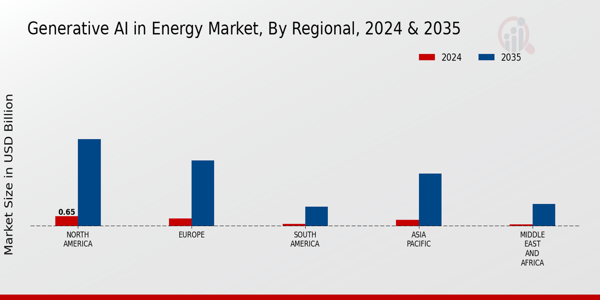Generative Ai In Energy Size
Generative AI in Energy Market Growth Projections and Opportunities
In the ever-evolving landscape of the energy market, the integration of generative artificial intelligence (AI) has sparked a transformative shift in market dynamics. Generative AI, with its ability to create new data and insights, is reshaping how energy companies analyze and optimize their operations. One significant aspect of this transformation lies in predictive maintenance. By utilizing generative AI algorithms, energy companies can forecast equipment failures and schedule maintenance proactively, minimizing downtime and maximizing operational efficiency.
Moreover, generative AI is revolutionizing energy trading strategies. With its capacity to simulate various market scenarios and generate synthetic data, AI-powered algorithms can provide more accurate price forecasting, enabling energy traders to make well-informed decisions in volatile markets. This not only enhances profitability but also mitigates risks associated with market fluctuations.
Furthermore, the deployment of generative AI in energy production processes is driving optimization to unprecedented levels. Through the generation of synthetic data, AI models can simulate different operating conditions and identify optimal settings for energy generation equipment. This optimization leads to increased energy output, reduced waste, and enhanced sustainability, aligning with the industry's growing focus on environmental conservation.
In addition to operational efficiency improvements, generative AI is facilitating innovation in energy resource exploration and extraction. By analyzing vast datasets and generating synthetic geological models, AI algorithms can identify potential energy reserves with greater accuracy and efficiency. This not only reduces exploration costs but also enhances the discovery of untapped energy sources, thereby expanding the market's resource base.
Furthermore, the integration of generative AI is fostering collaboration and competition within the energy market. Companies are increasingly investing in AI research and development to gain a competitive edge, leading to a surge in innovation and technological advancements. Additionally, the emergence of AI-powered energy startups is disrupting traditional market dynamics, introducing new ideas and solutions that challenge established players.
However, the widespread adoption of generative AI in the energy market also presents challenges and considerations. One significant concern is data privacy and security, as the utilization of AI algorithms requires access to vast amounts of sensitive data. Energy companies must implement robust cybersecurity measures to safeguard against potential breaches and protect confidential information.
Moreover, there are ethical implications surrounding the use of AI in decision-making processes, particularly in areas such as energy trading and resource allocation. Ensuring transparency and accountability in AI algorithms is essential to maintain trust and integrity within the market.
Additionally, the rapid pace of technological advancement necessitates continuous learning and adaptation within the workforce. Energy companies must invest in training programs to equip employees with the necessary skills to leverage generative AI effectively and maximize its potential benefits.
















Leave a Comment